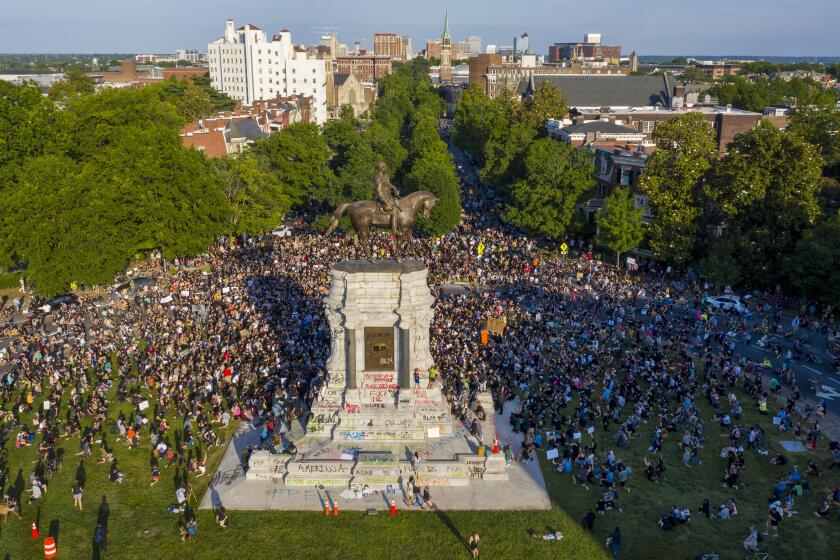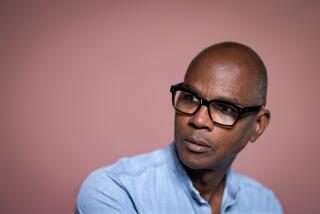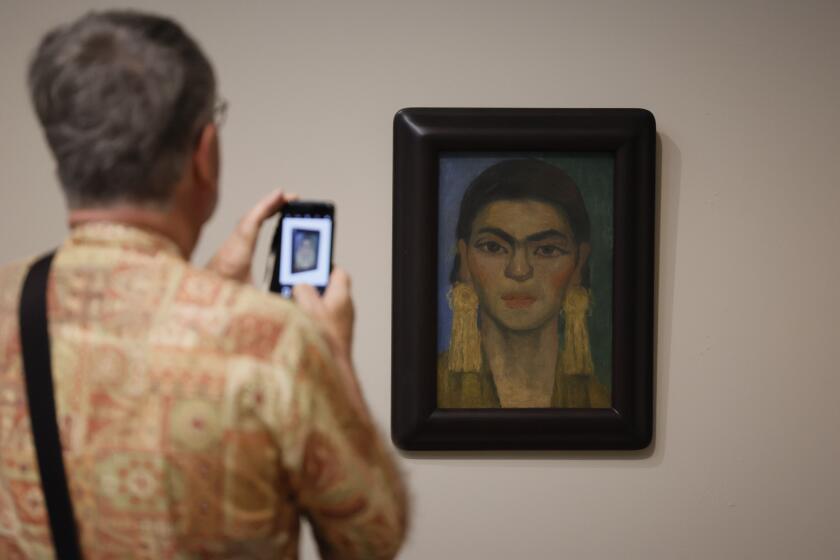Review: @museummammy knows a thing or two about art. Listen up
Artists often look around the world, do not see themselves and so set about the imaginative process of making a world that includes them — front and center.
Kimberly Drew is not an artist but she thinks like one. Drew is a writer, and her newly published book for young adults is a smart narrative of a sometimes muddled, sometimes clarifying journey of artistic imagination. “This Is What I Know About Art,” out this month from Penguin Workshop, tracks the awakening of her steadily growing appetite for painting, sculpture and other forms of cultural production, as well as for the institutions that chronicle and house it. She puts herself in the middle of the tale.
The timing couldn’t be better.
Drew, born in Orange, N.J., in 1990, is Black and gay, and gay Black women have been instrumental in leading the protests against police brutality and structural racism that have galvanized the nation since the killing of George Floyd in Minneapolis on May 25. There is anger about institutional inequality in this book, as there should be.
In 2014, while working as social media manager at the Studio Museum in Harlem, the then-23-year-old wrote angry posts about the lack of diversity in the newly released list of artists for the next Whitney Biennial. Museum spokespeople don’t often publicly attack other museums, so the posts were widely noticed.
Studio Museum Director Thelma Golden called Drew into her office — not to dress down the younger woman but to consider how she could be more effective with her incisive observation. “It was not just enough to be angry,” Drew writes. “I had to be strategic.”
Drew’s anger reminded me of James Baldwin nearly 60 years ago. The writer famously told a 1961 radio interviewer, “To be a Negro in this country and to be relatively conscious is to be in a state of rage almost, almost all of the time — and in one’s work.”
“This Is What I Know About Art,” chronicling a dawning of cultural consciousness and aimed squarely at high school and young-adult readers, is an example of doing that work. Golden’s immediate advice merges with Baldwin’s historical counsel. It’s a story of how, in an American society where art is of marginal public interest, the author came to discover its power. And it’s a story in which many (maybe most) people who have emerged as artists and art workers will recognize themselves.
One pivotal moment in that evolution came, ironically enough, in the Whitney’s galleries, where Drew had taken her mother on an outing. Excited to show her an Andy Warhol painting, Drew was shocked when her dear mom, a woman she describes as “brilliant,” had never heard of arguably the world’s most famous contemporary artist.
“On one hand, I immediately realized that my mother was part of a majority of Black people who do not frequent museums,” Drew writes, citing a familiar institutional complaint. But she takes the rote observation one step further, which orthodox museum proselytizers rarely do: Her mother hadn’t set foot inside an art museum since her daughter was born, but the omission also “seemingly had little impact on her life.”
A life well lived without art museum attendance? Sure — why not? Many in my own family have done it.
Call this a meaningful, profoundly personal lesson in scale and complexity, themes essential to any deep understanding of works of art, museum cultures and how they operate in American life. The experience revealed something Drew hadn’t been taught at her Rhode Island boarding school or during otherwise excellent classes in art history and African American studies at prestigious Smith College.
Put it like this: Art and art museums are not for everybody; but they are for anybody, which isn’t the same thing. Barriers against anybody need removal.
“This Is What I Know About Art” starts with Drew’s not uncommon youthful cluelessness that being an artist or an art professional — curator, gallerist, critic, historian, etc. — is an actual thing that grown-ups do. She started college with a career in math in mind, then slid through chemistry, engineering and architecture, since math was applied to all those disciplines. She was never fully comfortable in any of them.
Finally, thanks to an unusually perceptive academic adviser who taught African American studies, she applied for and got a paid summer internship at the Studio Museum in Harlem. Everything changed.
The changes weren’t easy, and Drew is candid in describing failures and anxieties, not just successes, along the way. (The target teen and young-adult readership is plainly in mind, but codgers benefit too.) Back in school, art history classes began to fill her schedule.
Quickly she arrived at the inevitable question: Where are the Black artists? Almost none turned up in her varied coursework. Cultural erasure is its own form of violence.
For partial explanation, Drew quotes scholar and social activist bell hooks: “Throughout African American history, performance has been crucial in the struggle for liberation, precisely because it has not required the material resources demanded by other art forms.” In her junior year at Smith, Drew launched on Tumblr the Black Contemporary Art blog, recording the genre’s present and catapulting its visibility.
Drew’s book is short (just 61 pages of text). But her private and professional experience in digital social media no doubt honed the evident skill she put to good use with brevity here. On social media, 280 tight Twitter characters, a few graphs of Facebook text or a series of captioned Tumblr photographs can go a long way, diverging on infinite digital networks.
Perhaps we’ll know more in December, when “Black Futures,” Drew’s joint book project with New York Times journalist Jenna Wortham, is published (also from Penguin Random House). Yet, by managing social media at the upstart Studio Museum, which is focused on art by people of the African diaspora, and doing similar work at New York’s establishment titan, the Metropolitan Museum of Art, which is encyclopedic in scope, Drew has been instrumental in establishing a new field.
Drew’s memorable social media moniker is @museummammy. It shows her cultural savviness — pop and otherwise.
In 1964, New York artist Joe Overstreet painted Aunt Jemima tossing a hand grenade and blazing away with an assault rifle amid a pancake shower. Los Angeles assemblage artist Betye Saar soon equipped a grinning array of vintage Mammy memorabilia with tools like a Molotov cocktail and assorted guns.
In the same way that Drew’s millennial generation reclaimed “queer,” transforming a cruel epithet into a smart honorific, @museummammy gave a wry side-eye to a coerced figure of genuine domestic care, now taking the reins in public. Subservience became empowerment. Anger got strategic, which her target audience needs to know.
Southern mayors and Virginia’s governor are striking while the iron is hot, using the unprecedented moment to get it done.
More to Read
The biggest entertainment stories
Get our big stories about Hollywood, film, television, music, arts, culture and more right in your inbox as soon as they publish.
You may occasionally receive promotional content from the Los Angeles Times.








